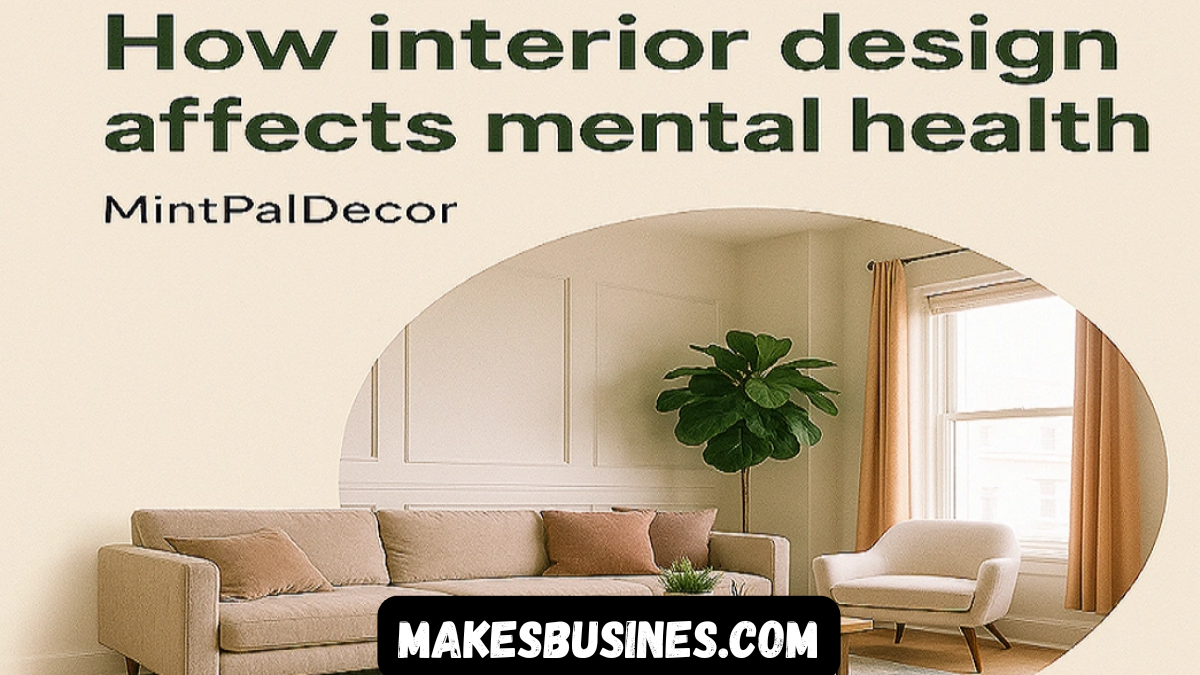Understanding the Essence of Interior Design
How to Be Better at Interior Design Mintpaldecor than simply choosing furniture or applying color to walls. It involves a deep understanding of space, functionality, and aesthetics. At the heart of interior design lies the desire to create harmonious environments that reflect both personality and practicality. Mintpaldecor, known for its tasteful take on modern and elegant decor, emphasizes the importance of intuitive design choices backed by artistic flair. To be better at interior design, one must first grasp the fundamental concepts that drive successful interiors: balance, contrast, rhythm, scale, and unity.
Creating a space that feels cohesive requires an understanding of how different elements interact. From the height of a chair to the texture of a rug, every detail plays a part. As Mintpaldecor often showcases, the mastery lies in making all components feel like they belong together, without necessarily being the same. Embracing this approach allows individuals to elevate their design skills beyond basic arrangement, nurturing a sense of atmosphere and story within the space.
Cultivating Your Creative Eye
Developing an eye for design is a continuous process. While talent plays a role, much of interior design excellence comes from observation, study, and practice. Mintpaldecor often curates spaces that are rich in subtle details, which come from years of experience and experimentation. To improve in this area, immerse yourself in design literature, follow visual trends, analyze successful interiors, and critique your surroundings. By doing so, you begin to understand the nuances that make a room inviting, functional, and timeless.
Another vital step in cultivating creativity is being open to inspiration from unexpected sources. Nature, architecture, fashion, and even personal memories How to Be Better at Interior Design Mintpaldecor can fuel interior concepts. This imaginative approach is a hallmark of Mintpaldecor’s work, where organic influences and cultural richness are often layered into modern aesthetics. The key is training your brain to make connections between visual and emotional responses, ultimately helping you replicate those feelings in a physical space.
Mastering Color Theory and Texture
Color and texture are among the most powerful tools in an interior designer’s arsenal. Understanding how colors interact—both emotionally and visually—can drastically enhance a space’s mood. Mintpaldecor frequently relies on a sophisticated palette that balances neutrals with occasional bold hues, making every room feel intentional and refined. To become better at interior design, one must study color theory, learn about warm and cool tones, and experiment with combinations that reflect the intended ambiance of the room.
Texture, on the other hand, adds depth and sensory richness to interiors. Smooth, soft, rough, glossy, and matte surfaces all offer different tactile experiences. Incorporating a variety of textures creates contrast and interest, making a room feel layered and complete. Mintpaldecor uses this principle often, mixing wood, metal, fabric, and stone to add personality to every space. Recognizing how to combine these textures without overwhelming the room is a skill that develops with practice and attention.
Space Planning and Functional Design
A crucial aspect of interior design is the ability to plan spaces effectively. This involves understanding the dimensions, flow, and intended purpose of a room. Mintpaldecor excels at maximizing space without compromising style. Whether designing for a small studio or a large open-concept living room, the goal remains the same: creating a layout that feels natural and facilitates daily living.
To improve your own spatial planning, start by studying floor plans and practicing how to arrange furniture to promote functionality and ease of movement. Visualizing traffic patterns and how people interact with their environment helps you anticipate needs and prevent clutter. Mintpaldecor often employs modular and multi-functional furniture, showing how design can be both elegant and adaptable. As your skills grow, you’ll start to intuitively sense where pieces should go and how to balance open space with decor.
Embracing the Power of Lighting
Lighting can make or break a space. Natural light brings warmth and vitality, while artificial lighting sets the mood and highlights design features. Mintpaldecor recognizes the value of strategic lighting and often incorporates layered lighting schemes, including ambient, task, and accent lights. Mastering these layers allows you to control how a room feels throughout the day and night.
To be better at interior design, learn how light interacts with surfaces, colors, and furnishings. Reflective materials, matte finishes, and even wall angles can alter the way light behaves. Consider how lighting affects emotion—warm tones create intimacy while cool tones bring clarity. Mintpaldecor frequently blends functional light with decorative fixtures, turning them into design statements. By understanding these dynamics, you enhance both the beauty and usability of a room.
Personalization and Storytelling in Design
Great interior design tells a story. Each room should reflect the values, tastes, and lifestyle of its inhabitants. Mintpaldecor champions the idea that personalization is not only about decorative items but about curating experiences. Every cushion, frame, or accent piece should contribute to a narrative, whether it’s heritage, aspiration, or comfort.
To improve your ability to personalize interiors, start by asking deeper questions about the people who will use the space. What are their hobbies? What memories do they want to relive? What atmosphere makes them feel most at home? Incorporating answers to these questions into the design leads to authenticity. Mintpaldecor often features bespoke details that capture identity, showing that personalization is the soul of effective design.
Exploring Styles and Staying Inspired
Being better at interior design also means expanding your knowledge of different design styles. From minimalist and Scandinavian to bohemian and art deco, each style carries its own language. Mintpaldecor is known for blending styles with finesse, creating eclectic yet cohesive interiors that don’t feel forced. Developing this versatility requires study, practice, and courage to mix seemingly unrelated elements.
As you explore various styles, remain inspired by change. Design is a constantly evolving field, and staying current with trends while maintaining a timeless foundation is key. Mintpaldecor exemplifies this by seamlessly integrating trending elements like earthy tones or curved furniture into classic backdrops. This approach helps prevent spaces from feeling dated and encourages constant reinvention.
Using Art and Accessories Wisely
Accessories and artwork are the finishing touches that tie a room together. Mintpaldecor’s spaces often feature carefully chosen art that reflects both taste and theme. To be better at interior design, learn to see accessories not as afterthoughts but as vital storytelling tools. Each item should have a purpose—whether it draws the eye, evokes emotion, or provides balance.
Avoid clutter by being intentional. A single bold piece can sometimes speak louder than several small ones. Mintpaldecor understands this principle and often uses large-format prints or sculptural elements to create focal points. The placement and proportion of art in a room also matter—eye-level positioning, symmetry, and alignment with furniture can significantly impact visual appeal.
The Importance of Sustainability and Quality
Contemporary interior design is increasingly leaning toward sustainability and conscious choices. Mintpaldecor often highlights the importance of selecting materials and furnishings that are both beautiful and environmentally responsible. To improve your own design approach, consider the long-term impact of your decisions. Opt for durable materials, repurpose items, and support ethical brands.
Quality over quantity is a philosophy that leads to more lasting, meaningful interiors. Rather than filling a space quickly, focus on acquiring pieces that have craftsmanship and purpose. Mintpaldecor’s projects often reveal this mindset, featuring heirloom-quality furniture and artisanal accents that stand the test of time. This attention to detail and care for the environment can set your work apart and deepen its value.
Digital Tools and Visualization Techniques
With advancements in technology, interior design has become more accessible through digital tools. From 3D modeling to augmented reality, these innovations help visualize spaces before implementing changes. Mintpaldecor embraces these tools to communicate ideas clearly with clients and ensure design intentions are realized accurately.
To enhance your design abilities, become proficient in using platforms like SketchUp, AutoCAD, or even mobile apps that allow room simulation. These tools not only help in planning but also in experimenting without physical commitment. The ability to virtually test colors, furniture placements, and textures empowers you to make confident decisions. Mintpaldecor demonstrates how combining creativity with technology leads to more effective and efficient design results.
Collaboration and Continuous Learning
Interior design is rarely a solo endeavor. Whether working with contractors, clients, or fellow designers, collaboration enriches the final outcome. Mintpaldecor frequently collaborates with artisans, architects, and engineers to create environments that are structurally sound and artistically expressive. Learning how to communicate your vision and adapt to feedback is essential for growth.
To become better in the field, invest in continuous learning. Attend design workshops, take courses, or participate in online communities. Interior design is ever-changing, and staying informed ensures your work remains relevant. Mintpaldecor thrives on innovation and education, showing that curiosity and openness are the foundation of design excellence.
Emotional Impact and Human Connection
At its core, interior design is about creating emotional resonance. A well-designed room can make someone feel safe, inspired, relaxed, or energized. Mintpaldecor’s interiors often evoke a calm elegance that goes beyond mere appearance. They reflect an understanding of human behavior and psychological responses to space.
To improve in this aspect, study environmental psychology and learn how space affects mood and interaction. Small changes in lighting, layout, or acoustics can influence how people experience a room. By tuning into these emotional responses, you can design with empathy, ensuring that your work not only looks good but feels right.
Final Thoughts
Becoming better at interior design is a journey of passion, patience, and precision. It requires a mix of technical skill, artistic vision, and emotional intelligence. Mintpaldecor serves as a shining example of how design can be both functional and expressive, blending tradition with innovation to create spaces that resonate deeply. Whether you’re decorating a single room or planning a full home transformation, the key lies in intentionality—every choice should serve a purpose, tell a story, and improve the human experience.
By immersing yourself in the principles and practices that define excellent design, you can elevate your abilities and create environments that truly inspire. Keep experimenting, keep learning, and never lose sight of the beauty that thoughtful interiors can bring to everyday life.
Frequently Asked Questions
What is the most important element in interior design?
Balance is essential—it ensures that all elements work together harmoniously in terms of color, texture, space, and proportion.
How can I find my interior design style?
Experiment with different aesthetics, observe what resonates with your personality, and analyze spaces you feel comfortable in. Over time, your style will emerge.
Is formal training necessary to be good at interior design?
While formal education helps, many skills in interior design can be self-taught through experience, observation, and continuous practice.
How does Mintpaldecor approach design?
Mintpaldecor focuses How to Be Better at Interior Design Mintpaldecor on blending elegance, personalization, and functionality with a strong emphasis on timeless aesthetics and storytelling through decor.
Can I become an interior designer without a degree?
Yes, many successful designers have built their careers through apprenticeships, self-study, and real-world experience. Passion and a strong portfolio are crucial.




